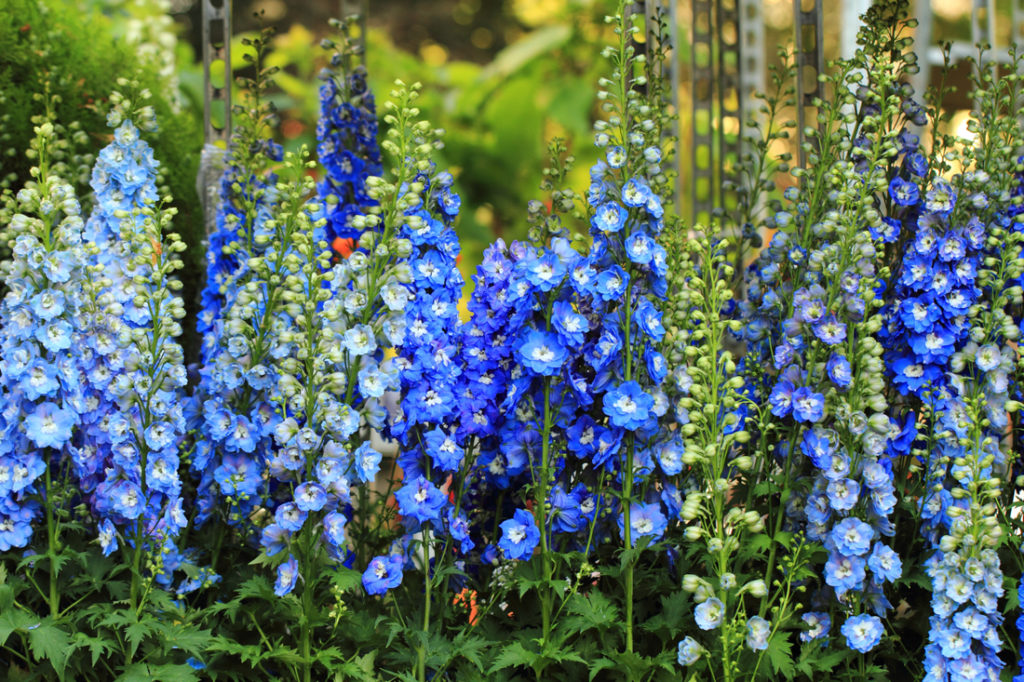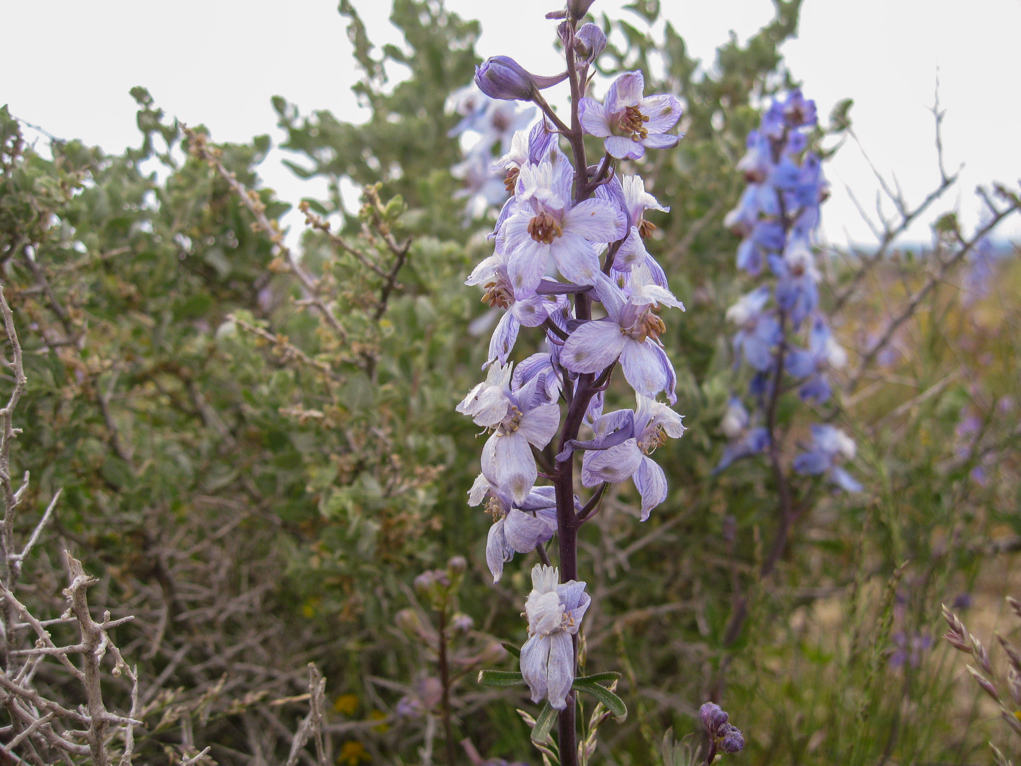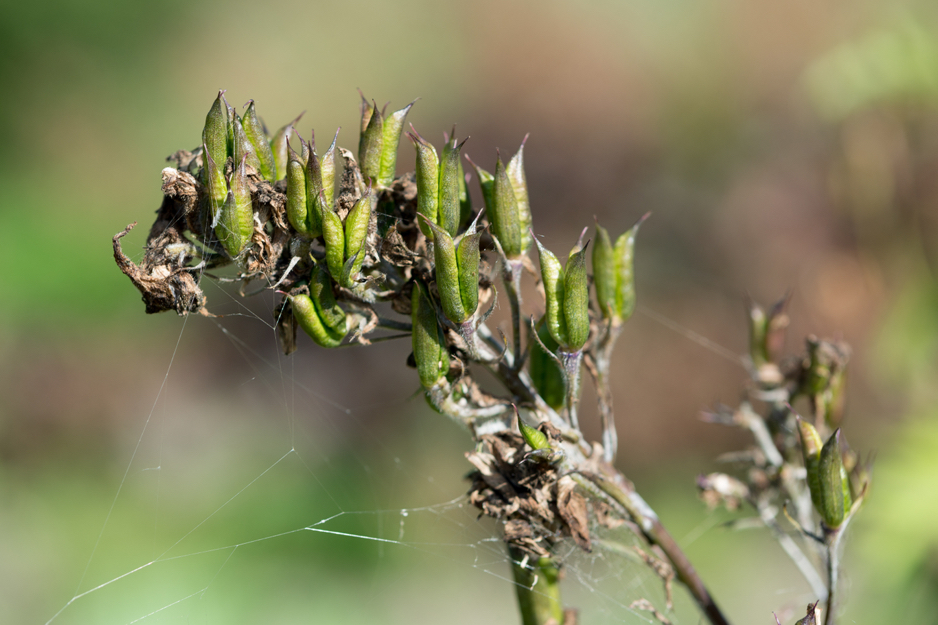End Of Season Delphiniums – Should You Deadhead The Flower Or The Inflorescence?

PERENNIALS > DELPHINIUM > DEADHEADING
Reviewed By DAN ORI

Dan has over 27 years’ under his belt caring for plants and gardens. Working as a Horticultural Instructor and Consultant, he draws on a diverse range of experience that includes working as a Head Gardener, Tree Surgeon, Garden Centre Trouble Shooter, and writer of academic papers. Dan has a Level 3 Diploma in Horticulture and is currently a candidate for the RHS’s most prestigious award – The Master of Horticulture.
IN THIS GUIDE
DELPHINIUM GUIDES
Deadheading
Growing From Seed
Growing In Containers
Propagating Cuttings
Support
Varieties
Winter Care
Delphiniums, also known as larkspurs, are deciduous perennials that produce an abundance of tightly clustered flowers on tall spikes and racemes, creating a joyous show of fabulous colour during the height of summer.
Deadheading these plants is an important component of plant care, not only because of garden aesthetics but because it redirects the plant’s energy into forming fresh blooms rather than developing seeds.
Because delphiniums produce numerous blooms on spikes or racemes, the entry-level gardener may be puzzled as to what to deadhead – the flower or the inflorescence.
We’ll guide you on what to deadhead – and how and when.

It’s important to remember that, because the blooms are borne on long upright spikes or racemes that emerge from the middle of the foliage, deadheading delphiniums is not as simple or straightforward as deadheading plants that produce individual stalked blossoms.
Nonetheless, once you get the hang of it you’ll be able to deadhead larkspurs correctly and efficiently.
This process is explained in depth below.
| Difficulty | Medium |
| Equipment Required | Gardening gloves, secateurs |
| When To Deadhead | July through October as a continuing activity |
When To Deadhead
You should begin to deadhead these plants soon after the first flush of blooms.
Thereafter, inspect your plants on a regular basis, I’d recommend every 7-10 days, and deadhead on an as-needed basis.

Now you know when to deadhead, here are the 4 steps you need to follow to deadhead your delphiniums:
1) Pinch Off Flowers
When you notice a few flowers on an inflorescence wilting or wilted, steady the spike or raceme with one hand and simply pinch off or snap off the flowers with the other hand.
2) Isolate The Inflorescence
As the season progresses you will observe that a great number of the flowers have wilted or are withered and spent.
For the most part, an inflorescence should be deadheaded from where it emerges from the centre of the plant within the foliage.

Hold the spike or raceme with one hand, tilting it a little as necessary, reach downward with the other hand and hook the rear blade of the bypass secateurs around the stalk in question, then slide the secateurs downward to cut it as close as possible to the base where it attaches to the plant.
However, on occasion, especially on plants with a bushy habit, you may not want to cut off the entire spike from its base.
If you notice that a spike is putting out healthy flowering shoots from its side near the bottom, deadhead it from just above these shoots.
3) Deadhead
Take care that the other stalks or stems are not enclosed within the blade along with the one you intend to deadhead.

Cut off the inflorescence with a crisp squeeze of the secateurs and pull out.
“It is worth considering not deadheading all your flowers, or at least some September blooms, as these can be perfect to harvest seed from to propagate new plants,” shares Dan Ori, a Master Horticulturist.
4) Cut Back In Autumn
After the flowering season is over, which is usually around October, you will notice that the plant is withering away.
At this time you should cut back the entire plant down to 5-6cm from the ground.
It will then come back bigger and better in the spring.

